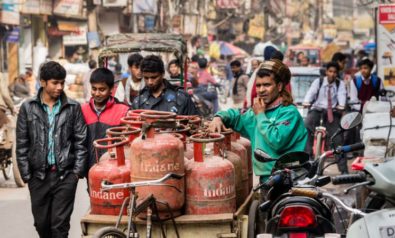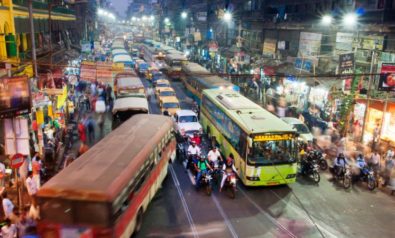As India strives toward equal rights, a change in the perceptions of men and women is needed to reduce gender disparity.
In simple terms, empowerment means giving power or authority to an individual. The empowerment of women has been extensively debated and written about all over the world. Sociologist Dhruba Hazarika has rightly said that empowerment of women means equipping them to be economically independent, self-reliant, in addition to providing positive self-esteem to face any difficult situation. Women should be equipped enough to participate in any development process.
Women in Indian society have come a long way from the days of being worshipped as goddesses to being molested and harassed—gruesome domestic violence cases, acid attacks and rapes.
Statistics pertaining to crimes against women have been comprehensively recorded and collated by the National Crimes Records Bureau under various headlines such as trafficking, dowry deaths and rapes. These statistics are alarming. It is imperative for all Indians to tackle these problems and improve initiatives and legislation that empower women and girls.
Over the years, a steady rise in the adversities faced by Indian women and girls has taken place. Some major challenges that India faces are poverty, a lack of education, health and safety.
Although the Indian constitution grants certain constitutional and legal privileges to women pertaining to equality and fundamental rights, some special provisions were also introduced to strengthen the process of providing equal status to women. These special initiatives include:
1) Setting up a National Commission for Women: This is a statutory body that seeks to monitor and study matters related to constitutional and legal safeguards provided to women; review existing legislations; and suggest amendments. There is a need for the government to come up with special provisions for women in legal as well as social aspects.
2) A reservation of seats for women in local self-government by ensuring one-third of total seats for women in both urban and rural areas.
3) The National Plan of Action for the Girl Child to ensure the survival, protection and development of girls.
4) The National Policy for the Empowerment of Women, in which the goal is to bring about the advancement and development of women empowerment all over India.
It is important to note the third objective of the United Nations’ Millennium Development Goals (MDG): “Promote gender equality and women empowerment.”
India had agreed upon the MDGs to reduce disparity. According to the Indian government’s report in 2009: “Participation of women in employment and decision-making remains far less than that of men, and the disparity is not likely to be eliminated by 2015. In addition, the labor market openness to women in industry and services has only marginally increased from 13-18 percent between 1990-1991 and 2004-2005.”
It is crucial that society understands the importance of equal rights given to women. The Indian government has already introduced schemes such as the Support to Training and Employment Program (STEP), among others, to facilitate equal employment opportunities for women. Initiatives such as “Beti Bacho, Beti Padhao Yojana” (Save girl child, educate girl child) strive toward generating awareness and improving welfare services meant for women in India. Nongovernmental organizations (NGO) are consistently working toward enabling economic as well as social empowerment of women through various initiatives. Many firms, under their corporate social responsibility initiatives, have also started running women empowerment programs in rural and urban areas.
The initiatives undertaken by the government, NGOs and the corporate sector are solely revolved around conducting programs for women; but at some point, we forget that it’s a two way street.
It is crucial to sensitize men and boys at a young age, so they become an integral part in bringing about a transformation on women empowerment in Indian society. When men start respecting women and accepting them as equals, a lot of gender-based inequalities will reduce considerably. Hence, the efforts put forth by the public and private sectors have to be complemented with gender sensitization initiatives.
A gradual change is now visible in modern-day India, and this can be seen in large cities. Women now have diverse professions as doctors, engineers, entrepreneurs, pilots, taxi drivers and police officers. They have found employment in fields that have been traditionally considered male-dominated.
Though women have outshined in every field, they still face discrimination at almost every level of employment. Gender bias is evident from the lack of workplace promotions to lack of basic sanitation facilities for female drivers in India.
Even though Indian women face numerous hurdles and challenges, it has not deterred their confidence and enthusiasm to bring about a powerful social change. They are forging a new path toward achieving social and economic empowerment.
Kofi Annan, the former secretary-general of the United Nations, once stated: “There is no tool for development more effective than the empowerment of women.” Indian women are treading toward empowerment to make conscious, progressive decisions for themselves.
The views expressed in this article are the author’s own and do not necessarily reflect Fair Observer’s editorial policy.
Photo Credit: Rajarshi Mitra

We bring you perspectives from around the world. Help us to inform and educate. Your donation is tax-deductible. Join over 400 people to become a donor or you could choose to be a sponsor.
Support Fair Observer
We rely on your support for our independence, diversity and quality.
For more than 10 years, Fair Observer has been free, fair and independent. No billionaire owns us, no advertisers control us. We are a reader-supported nonprofit. Unlike many other publications, we keep our content free for readers regardless of where they live or whether they can afford to pay. We have no paywalls and no ads.
In the post-truth era of fake news, echo chambers and filter bubbles, we publish a plurality of perspectives from around the world. Anyone can publish with us, but everyone goes through a rigorous editorial process. So, you get fact-checked, well-reasoned content instead of noise.
We publish 2,500+ voices from 90+ countries. We also conduct education and training programs
on subjects ranging from digital media and journalism to writing and critical thinking. This
doesn’t come cheap. Servers, editors, trainers and web developers cost
money.
Please consider supporting us on a regular basis as a recurring donor or a
sustaining member.
Will you support FO’s journalism?
We rely on your support for our independence, diversity and quality.
















Comment